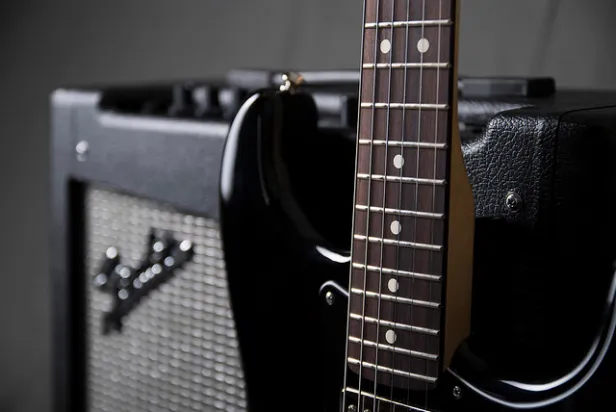The Secret To Wide And Full Guitar Recordings
Feb 17, 2014For years I thought the key to a big wide and full guitar sound was to layer multiple takes of my guitar part. Maybe two on the left, two on the right, and one up the middle. Why double when you can triple or quadruple right?!
Ironically more isn’t what makes your guitars sound bigger. Different is.

Via Scott Ritchie Flickr
Different Tones Are Huge
The simplest way to get a wide guitar sound is to record your guitar two times and pan one take hard left and the other hard right. But let’s take that a step further. To get those guitars to sound even wider (a very desirable thing to do considering how many other tracks tend to get jammed into our mixes) we need to have two different tones on the left and the right. This is because our ears perceive the differences and perk up, giving us a perception of more width than there actually is.
There are many ways to get different guitar tones in the studio. Some examples include: using different guitars, different amps, different pickups on the same guitar, different mic placement on your amps, different pedal combinations, different cabinet or speaker combinations, etc. Whatever is actually doable within your budget and with your gear, do it. Whatever it takes to get two very different, but compatible tones on the left and right will make a big difference in the width and fullness of your recording.
Different Chord Inversions Are Huge
I’m not much of a guitar player, but one thing I’ve learned and try to implement when I can is to change up my chord inversions in order to get width and fullness in my recordings. What am I talking about? Here’s a simple example. There is more than one way to play an E major chord on the guitar. So if your song involves an E chord, why not play one guitar part with a traditional E and then play your other part with a power chord E up on the 7th fret?
Or you could use a capo and play the same chord with different strings and fingerings? Or you could go way up on the neck and play other notes in an E major chord that compliment the traditional E chord well. You’re still playing an E for intents and purposes, but there is a different tonality and resonance to the second fingering that again, like the different guitar tones from our first point, makes your ears perk up, and you get more apparent separation and width.
Just Try Something Different
Hopefully you’re seeing the overall point here, that the secret to having guitar recordings that sound wide and full is to have different tones and frequency responses on the left and right. This can be a simple process to implement that can leave a huge impression on the listener.
But you can track this out even more. Why not different guitar parts entirely? Why not throw in a different type of stringed instrument? Banjo anyone? The idea is simple: small differences in the left and right of your mix can have huge impact. So on your next guitar recording session, after you lay down your first track, just try something different on your second. Once you pan them out, you’ll be glad you did.
Discover The 6 Steps for Creating a
Radio-Ready Song from Scratch"
Enter Your Email Below To Receive The Free 17-page PDF,
"6 Steps To A Radio-Ready Song"
We hate SPAM. We will never sell your information, for any reason.

